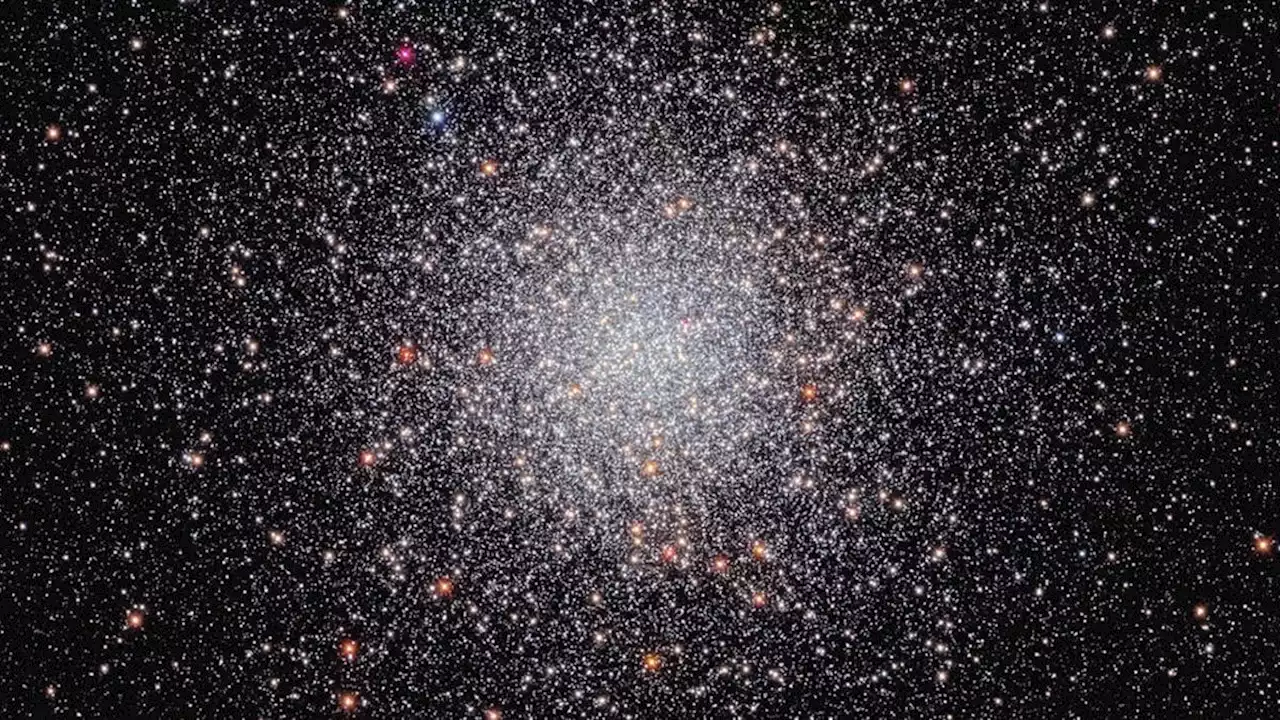The cluster is estimated to be about 12 billion years old.
image, called Pismis 26, takes its name from astronomer Paris Pismis, who discovered the collection of stars at the Tonantzintla Observatory in Mexico in 1959. The stars in Pismis 26 take on a nearly spherical structure. The cluster appears to contain predominantly red stars, with a smattering of brighter blue stars along the edges.
The cluster is also heavily metallic, meaning that its stars contain higher levels of elements that are heavier than hydrogen and helium than stars like the
Australia Latest News, Australia Headlines
Similar News:You can also read news stories similar to this one that we have collected from other news sources.
 Hubble Space Telescope image captures 'glittering swarm' of stars about 28,000 light-years awayThe Hubble Space Telescope recently captured the 'glittering swarm' of stars of the globular cluster NGC 6440, located some 28,000 light-years away in Sagittarius.
Hubble Space Telescope image captures 'glittering swarm' of stars about 28,000 light-years awayThe Hubble Space Telescope recently captured the 'glittering swarm' of stars of the globular cluster NGC 6440, located some 28,000 light-years away in Sagittarius.
Read more »
 Hubble telescope spies a swarm of stars in a cosmic beehiveLocated 28,000 light-years from Earth, the globular cluster NGC 6440 is a densely packed conglomeration of stars hiding rapidly spinning pulsars.
Hubble telescope spies a swarm of stars in a cosmic beehiveLocated 28,000 light-years from Earth, the globular cluster NGC 6440 is a densely packed conglomeration of stars hiding rapidly spinning pulsars.
Read more »
 James Webb Space Telescope Unveils Exquisite Views of Distant GalaxiesFor decades, the Hubble Space Telescope and ground-based telescopes have provided us with spectacular images of galaxies. This all changed when the James Webb Space Telescope (JWST) launched in December 2021 and successfully completed commissioning during the first half of 2022. For astronomers, the
James Webb Space Telescope Unveils Exquisite Views of Distant GalaxiesFor decades, the Hubble Space Telescope and ground-based telescopes have provided us with spectacular images of galaxies. This all changed when the James Webb Space Telescope (JWST) launched in December 2021 and successfully completed commissioning during the first half of 2022. For astronomers, the
Read more »
 How the James Webb Space Telescope changed astronomy in its first yearCloser looks at everything from Mars to distant galaxies.
How the James Webb Space Telescope changed astronomy in its first yearCloser looks at everything from Mars to distant galaxies.
Read more »
 Webb Space Telescope Reveals “Stirred Up” Secrets of Breathtaking Planetary NebulaResearchers reconstructed the scene, finding up to three unseen stellar companions that may have shaped the planetary nebula’s layers of gas and dust. Wait, how many stars were at this party? It’s likely there were up to five – but only two appear now! A research team recently began digging into We
Webb Space Telescope Reveals “Stirred Up” Secrets of Breathtaking Planetary NebulaResearchers reconstructed the scene, finding up to three unseen stellar companions that may have shaped the planetary nebula’s layers of gas and dust. Wait, how many stars were at this party? It’s likely there were up to five – but only two appear now! A research team recently began digging into We
Read more »
